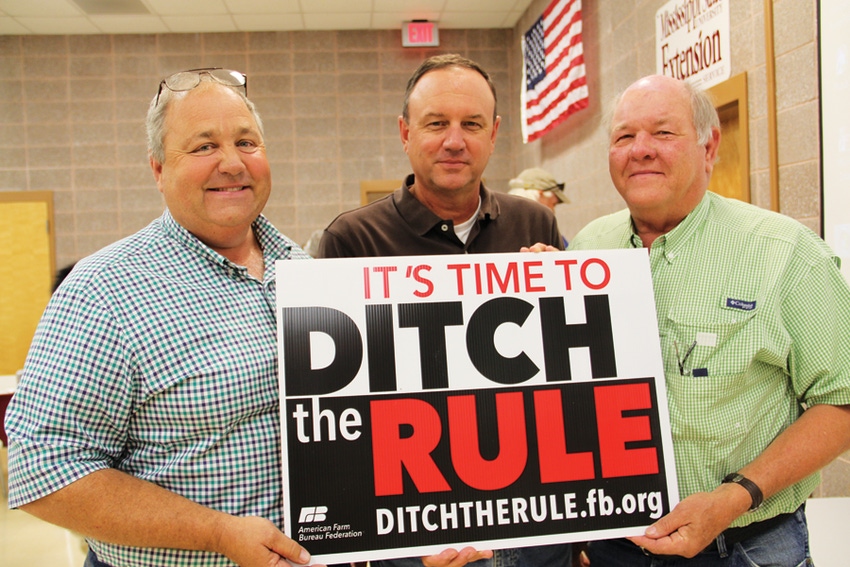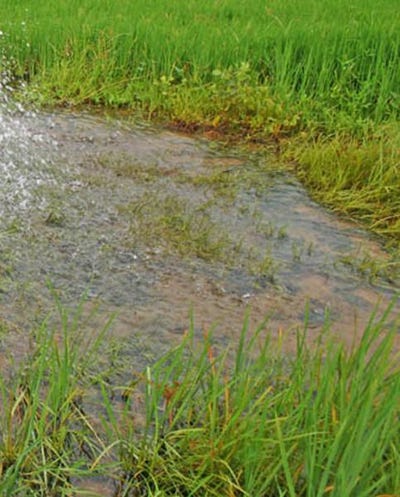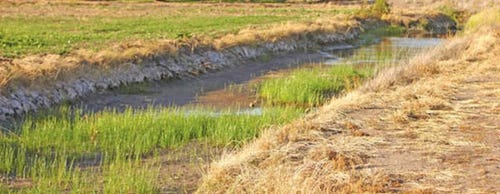
A proposed rule by the Environmental Protection Agency and the U.S. Corps of Engineers would give the two agencies the power to dictate land use decisions and farming practices on or near waters and land features covered by the rule, says Andy Whittington, Mississippi Farm Bureau Federation environmental programs coordinator, and would make it more difficult to farm or to change a farming operation in order to remain competitive and profitable.

Agricultural organizations are marshaling forces to defeat a proposed rule by the Environmental Protection Agency and the U.S. Corps of Engineers that would expand the regulatory authority of those agencies under the Clean Water Act, with significant impact on U.S. farming practices, they say.
“If it’s water, and you see it every day, you might as well assume under this rule that it’s federal water,” says Andy Whittington, environmental programs coordinator for the Mississippi Farm Bureau Federation, who spoke at the joint annual meeting of the Mississippi Boll Weevil Management Corporation and MFBF’s Cotton Policy Committee.
Get the latest ag news delivered daily to your inbox: Subscribe to Delta Farm Press Daily
The proposed rule would give the two agencies the power to dictate land use decisions and farming practices on or near waters and land features covered by the rule, he says, and would make it more difficult to farm or to change a farming operation in order to remain competitive and profitable.
In a recent Arizona hearing on the issue, Rep. Matt Salmon, R-Ariz., said, “This is not about the environment — this is about a power grab.” His fellow Arizona Republican representative, David Schweikert, said the rule would not affect only farmers — “It potentially affects everyone.”
Permit requirements under the rule — which would change the definition of “navigable waters” to include smaller waters, ditches, small ponds, and even depressions in fields and pastures that are only wet when there is heavy rain, streams, and even some dry land — would be particularly onerous for agriculture, Whittington says.
“For example, if you run a five-shank ripper through the soil without a Section 404 permit from the Corps of Engineers, you could be in violation of the Clean Water Act,” he says. “They would consider any plow that runs more than 18 inches deep as changing the hydrology of the soil.”
Decisions regarding permits
With the complexity of the rule, Whittington says, farmers will be confronted with decisions on what does or does not require a permit, whether an exemption exists for a particular situation, and whether or not they would be in violation of the CWA.
“If landowners can’t get permits to do things they need to do to maintain a viable farming operation, farming and ranching is going to become much more difficult.”

A proposed rule change to the Clean Water Act would have an adverse impact on agriculture, farm groups contend.
The EPA contends in its promotional materials that it isn’t broadening restrictions under the Clean Water Act, he says. “They claim it would have minimal economic impact, and that we’re making a big deal of nothing, that we’re reading too much into it. But that’s not our interpretation.”
The American Farm Bureau Federation is spearheading a “Ditch the Rule” campaign, urging the EPA to scrap the proposed rule change. “We want them to withdraw the rule, start all over, and work with ag organizations and other stakeholders to devise something more workable,” Whittington says.
The AFBF contends the rule would jeopardize many farmers’ ability to remain in production, by denying permits for a wide variety of farming practices. “For example, building a fence across a ditch, applying fertilizer or pesticides, or pulling weeds could require a federal permit. The proposed rule, in effect, would give the EPA veto authority over a farmer’s or rancher’s ability to operate.”
Under the proposed rule, “nearly every drop of water that falls would be regulated” by the EPA and the Corps, AFBF says. “The Supreme Court has said in two separate decisions that there are limits to the EPA’s authority under the Clean Water Act. If the agency can regulate every body of water, from the largest to the smallest, and even areas that aren’t wet most of the time, then there are effectively no limits to the agency’s reach.”
Impractical...and illegal
The EPA’s proposal isn’t just impractical, it’s illegal, says AFBF President Bob Stallman, who testified before the House Subcommittee on Water Resources and Environment.
“This threatens local land use and zoning authority, and is an end run around Congress and the Supreme Court,” he says. “The EPA claims that farmers would face less regulation, when in fact the rule would micro-manage farming via newly mandated procedures for fencing, spraying, weeding, and more. Permitting could delay time-sensitive tasks for months, potentially ruining crops in the process.

Even farm ditches could be subject to regulation under a proposed rule change to the Clean Water Act.
“The EPA is deliberately misleading the regulated community about the impacts on land use. If more people knew how regulators could use this proposed rule to require permits for common activities on dry land, or penalize landowners for not getting permits, they would be outraged,” Stallman says.
“The Clean Water Act was signed into law in 1972 with the clear purpose of protecting the nation’s waters from pollution of all sorts. Congress gave states, not the EPA, the primary authority to oversee land use. This proposal would turn that relationship on its head.”
Although the EPA says it will exempt farmers from the rule, the AFBF says the exemptions are “extremely narrow” and only apply to one part of the Clean Water Act, the Section 404 Dredge and Fill permit program.
“The rule provides no protection from enforcement over other activities, such as weed control, fertilizer applications, and other common farm activities that may trigger CWA liability and permit requirements.”
Additionally, a farmer must have been farming continuously since 1977 to benefit from the exemptions.
Regulatory jurisdiction 'vastly broader'
“The rule narrows existing exemptions by tying them to mandatory compliance with what used to be voluntary Natural Resources Conservation Service standards,” AFBF says. “Farmers previously could undertake these practices as part of their normal farming activities — now those activities must comply with NRCS standards, or else the farmer risks CWA enforcement.”
And the organization contends, because those exemptions are not part of the rule, but “are included in an interpretive rule that is more like agency guidance, the EPA and NRCS could narrow them even more at any time.
“These exemptions don’t change the fact that the scope of waters and land that would come under federal regulatory jurisdiction is vastly broader under the proposed rule. These narrow exemptions won’t protect farmers or other landowners from new restrictions or prohibitions that will come from establishing water quality standards and specific, numeric discharge limits for ditches, intermittent streams, and other features that the EPA now plans to sweep into federal jurisdiction.”
David Sunding, who holds the Thomas J. Graff Chair in Environmental and Resource Economics at the University of California, Berkeley and is a professor in the Department of Agricultural and Resource Economics, did an economic analysis of the rule and says it is shot full of errors and that the EPA’s explanation of its costs and benefits aren’t realistic.

The proposed rule change to the Clean Water Act would, in effect, give the EPA veto authority over many farming operations, opponents say.
In his report, “Review of 2014 EPA Economic Analysis of Proposed Revised Definition of Waters of the United States,” he says the EPA systematically underestimated the impact of the rule on affected communities and businesses.
Sunding, who is a founding director of the Berkeley Water Center and currently serves as the chair of his department, says the EPA excluded costs, under-represented jurisdictional areas, and used flawed methods to arrive at much lower economic costs of the proposed rule.
Lack of transparency in the rule makes it difficult to understand or replicate the EPA’s calculations, examine its assumptions, or understand discrepancies in its results, he says.
Further, Sunding says, the errors in the EPA’s analysis are so extensive as to render it useless for determining the true costs of the rule.
Sunding prepared his report with support from the Waters Advocacy Coalition, which represents Americans involved in agriculture, construction, real estate, mining, wildlife conservation, forestry, manufacturing, and energy, and organizations including the American Farm Bureau Federation.
Mississippi’s Andy Whittington says, “We’re going to be talking about this quite a bit over the next several months, and we’re working with our congressional delegation and other farm organizations to get this proposed rule withdrawn.”
About the Author(s)
You May Also Like



